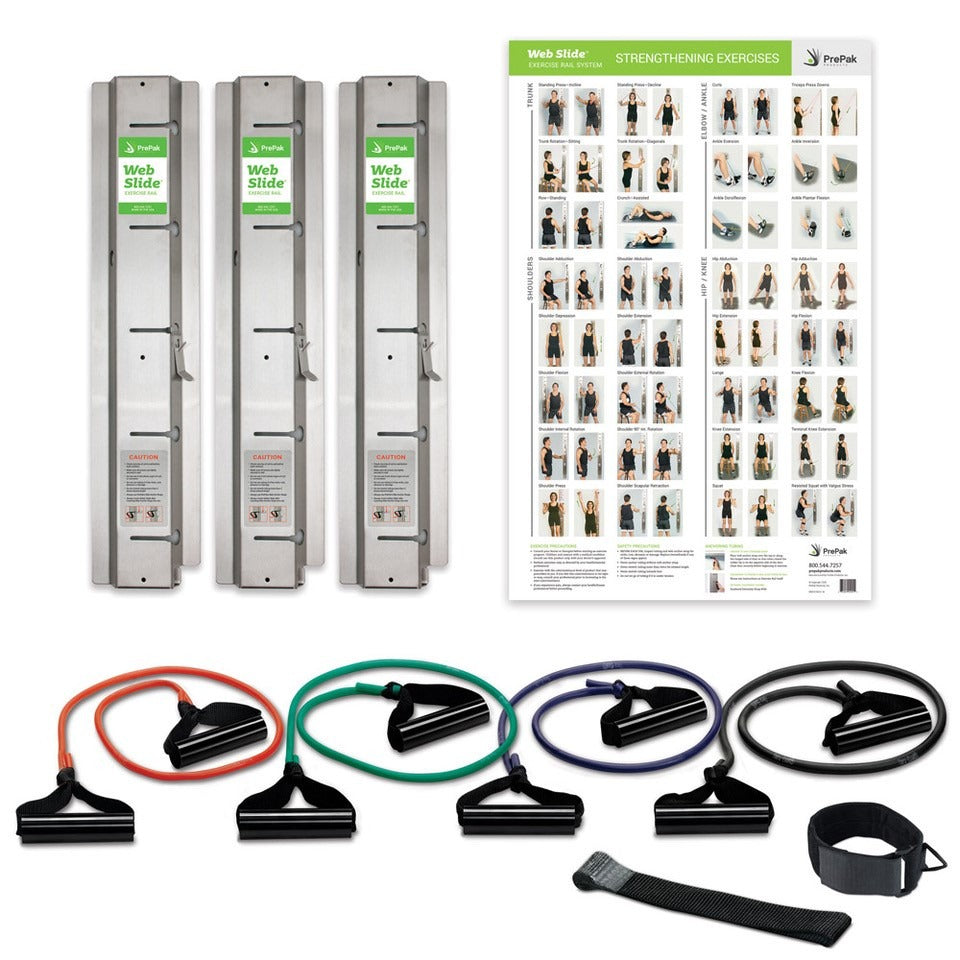Injury is inevitable. It happens to everyone eventually, whether couch potato or elite athlete. And whatever the trouble — whether it’s a pain in our shoulder when we reach for the remote or a strained muscle that throws off our training schedule — we want it fixed, and fast.
Fortunately the field of physical therapy is there to help us. Physical therapists use their years of scientific training and experience to guide our rehabilitation efforts, often resulting in full recovery from injury without the need for surgery or medication.
Targeted exercises are often the key. An expert physical therapist can analyze an injury or disability and determine exactly what needs to be trained, stretched, rested, or otherwise manipulated. The PT will then prescribe exercises unique to the injury that will enhance the body’s natural healing processes, speed up recovery, and reduce the risk of further setbacks.
Often these exercises will require simple yet highly effective rehabilitation equipment. Physical therapy products such as those listed below are relatively inexpensive but invaluable when it comes to getting you back to full functionality.
Rehab Exercise Equipment for all Your Recovery Needs
- Home Ranger Shoulder Pulley — Shoulder injuries can be anything from annoying to incapacitating. They’re also incredibly common, with causes ranging from overuse and traumatic injury to side effects of mastectomy and stroke. A time-tested treatment for recovery from a shoulder injury is the use of a shoulder pulley, with the Home Ranger Original Shoulder Pulley from PrePak Products being the first such portable device on the market. Strong, durable, and very effective, the Home Ranger shoulder pulley goes where you go to help guide and ease your shoulder range of motion exercises in all planes of movement.
- Exerband tubing — Resistance tubing is one of the most commonly used pieces of rehab exercise equipment in a physical therapist’s arsenal, and with good reason. Inexpensive, lightweight, and extremely portable, tubing is a great strength training option for any muscle group. It also works for any stage of recovery, with resistance levels ranging from ultra light to extra heavy. And unlike traditional weights, resistance tubing allows for exercises in any plane of motion, rather than being limited by the up-and-down orientation of gravity. At a minimum, you can get by with a length of tubing with attached handles for many exercises, but adding an anchor strap (for attachment to a door) or exercise workstation accessories can open up a new world of rehab exercise options.
- Free-Up Massage Cream — While not exactly “exercise,” massage is often an important part of physical therapy. Massage affects muscle tissue at the cellular level, helping to regulate inflammation, reduce pain, and promote faster healing. Using a professional massage cream makes it even better by giving the massage therapist more control and easing the strain on their own hands and muscles — making the massage a win-win for both patient and therapist.
- The Rope — Another key component of exercise is stretching. When you focus on building muscles, muscle become stronger but also tighter. This can lead to imbalances in strength, which can affect performance and posture. Stretching is a great way to counter this problem, making sure you continue to get the full benefit of your strength training physical therapy exercises. One great way to stretch is with The Rope, an assisted stretching device designed to promote flexibility and pain-free range of motion.
- Home Ranger Knee Pulley — The same principles used for the shoulder pulley are adapted to promote range of motion in the knee with the Home Ranger Knee Pulley. Ideal for both flexion and extension range of motion exercises for pre- and post-surgery knee replacement patients, the knee pulley also comes with the added benefit of allowing self-administered “distraction” — a way of relieving pain with gentle joint separation, ideal for patients with knee osteoarthritis.

